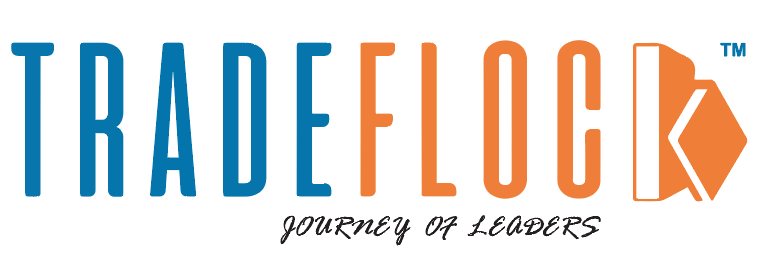On June 12, 2025, tragedy struck when Air India Flight AI 171, a Boeing 787‑8 Dreamliner, crashed shortly after takeoff from Ahmedabad, killing over 270 passengers and crew, along with some on the ground. While the investigation unfolds, early indicators point to a critical dual-engine failure, a dramatic mayday call, and possible system failures involving flaps or landing gear.
This disaster has reignited scrutiny of Boeing, a company once celebrated for aerospace safety and engineering excellence. There is growing evidence that, over the past decade, profit-driven decisions have sometimes overshadowed quality control.
Table of Contents
The Dreamliner’s Troubled Past
Although hailed as revolutionary when introduced in 2011, the 787 Dreamliner quickly faced issues. In 2013, lithium-ion battery fires led to a full grounding. The resolution required redesigns and raised early doubts about Boeing’s rush to launch. More concerning, whistleblowers like John Barnett reported serious manufacturing lapses at Boeing’s South Carolina plant, such as missing or defective parts, contaminated oxygen systems, metal shavings near avionics, and even undocumented defects. Many of his warnings were ignored, and the FAA found system-wide failures, such as faulty oxygen regulator components in some 787s.
These revelations painted a distressing picture of a company prioritising production speed over rigorous quality checks. Barnett’s reports triggered FAA investigations and legal actions, but were often overshadowed by Boeing’s narratives pushing unblemished production milestones. Tragically, Barnett died by his own hand in 2024, a stark reminder of the personal toll linked to these unresolved safety concerns.
The 737 MAX Debacle: A Crucible of Failure
Before echoes of modern incidents, Boeing’s 737 MAX series triggered global shock with two fatal crashes in late 2018 and early 2019, ending 346 lives. The common denominator was MCAS—a flight control system malfunctioning due to faulty Angle‑of‑Attack sensors, pushing planes into unrecoverable dives. Subsequent investigations revealed Boeing’s design shortcuts and muted pilot information about MCAS.
Moreover, insiders reported that Boeing had downplayed quality flags to keep production lines moving. Gary Pierson, a former 737 manager, testified that Boeing resisted halting production weeks before the first crash and had delivered jets with serious mechanical faults. The FAA joined in finding Boeing’s internal inspectors insufficiently empowered and possibly influenced by Boeing’s interest. Internal communications showed a deeply dismissive and uncaring workplace culture toward potential safety issues. In the wake of the disasters, Boeing paid $2.5 billion in fines, acknowledging liability yet avoiding the full weight of punitive damages.
Red Flags Leading up to Ahmedabad
Although the 787 Dreamliner was not grounded in 2013, recurring concerns persisted. A 2023 FAA investigation uncovered improperly installed bulkheads in 737 MAXs, and incidents like Alaska Airlines deflating cabin doors highlighted recurring quality lapse issues. Whistleblowers like Sam Mohawk later spoke about missing parts and poor tracking under Boeing’s watch.
Industry watchdogs and ex-engineers expressed alarm over Boeing’s RNA culture, which is rooted more in cost-cutting than rigorous safety. Anonymous reports warned of failures in basic quality checks, inadequate speed at fixing defects, and degradation of regulatory oversight.
The Ahmedabad Crash: A Harbinger?
What makes the Ahmedabad crash particularly sobering is its timing and nature:
- The plane reportedly climbed just 450 feet before crashing, suggesting critical engine thrust loss.
- Footage reveals the “Ram Air Turbine” (RAT) activation, signalling severe loss of hydraulic/electrical power.
- A final call of “Mayday… no power” echoes the desperation of instruments and systems failing in real time
These signs hint at more than just pilot error or bird strike. Combined with Boeing’s known engine and component issues history, they suggest possible deeper design or assembly failures.
The Real Cost of Compromise
Each Airbus competitor took advantage of Boeing’s missteps. With delays in the MAX grounding, clients diverted to Airbus, eroding Boeing’s global market share. Rebuilding technical credibility costs far more than repair. Boeing’s share price dipped nearly 5% following the Ahmedabad crash and related fleet inspections.
Public confidence matters. Families of victims from MAX crashes continue litigation. Trust in Boeing waned further with the Dreamliner fire and flight diversion just days before the Ahmedabad catastrophe. In the era of social media and citizen journalism, viral visuals—like the lone survivor calmly walking from flames—exert crushing reputational damage.
Can Boeing Reclaim Its Standards?
Boeing asserts its commitment to overhaul its Safety Management Systems (SMS), aligning them with FAA rules. In 2023, it introduced SMS boards tasked with risk tracking across design and manufacturing units. But industry experts caution that systems alone are insufficient without cultural change.
Independent FAA reviews, notably over Boeing’s ODA (designated certification groups), flagged internal pressures undermining inspectors’ independence. Reforming Boeing’s internal culture toward true “just culture” reporting, non-retaliation, and transparency could prove even tougher than technical fixes.
The Ahmedabad Wake-Up Call
The Air India crash may serve as a reset moment—not just for Boeing, but for regulators worldwide. The DGCA (India) has ordered urgent inspections of Boeing 787s; investigators from the US and UK are actively assisting. If Boeing’s fate is to be decided in public probe halls, the company must go beyond compliance. It must earn trust.
The central question now: can Boeing reverse decades of system erosion, cultural slack, and corner-cutting reputational damage?
If they fail, their market dominance will continue to erode, lawsuits and regulatory fines will mount, and passengers may increasingly turn elsewhere. Boeing’s decline isn’t just technical; it’s moral and institutional.






